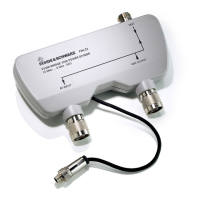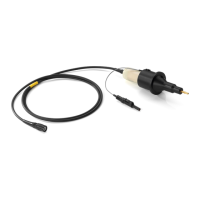Safety and regulatory informationMXO 4 Series
21User Manual 1335.5337.02 ─ 07
The delivered input leads might have a jacket wear indicator that indicates a worn
jacket by different jacket color. In this case, do not use the input lead. Replace it
with a new one.
●
When connecting to the DUT, keep your fingers behind finger guard. Remove jew-
elry, watches, and other metallic objects. Only use 4 mm safety banana plugs.
Working with current probes
When working with current probes, you can measure high-frequency currents or cur-
rents that contain high-frequency components.
●
Switch off the test circuit while connecting the probe.
●
Do not attach the clamp to bare unisolated conductors. To avoid injury from a short
circuit, measure at a location on an insulated wire where the insulation is sufficient
for the circuit voltage.
●
Connect the probe only to the secondary side of a breaker. With this measure, you
can avoid injury if a short circuit occurs.
●
The following effects can cause burns and fire or damage to the measurement site:
– Eddy current loss can cause heating of the sensor head.
– Dielectric heating can cause heating of cord insulation and other materials.
●
When measuring current that includes a high-frequency component, consider the
derating characteristics of the probe. Do not measure any current that exceeds the
rated current.
●
Using the probes with high frequencies or strong magnetic fields may cause the
device to become abnormally hot, resulting in fire, equipment damage, or burns.
Measurement categories
IEC 61010-2-030 defines measurement categories that rate instruments on their ability
to resist short transient overvoltages that occur in addition to the working voltage. Use
the measurement setup only in electrical environments for which they are rated.
●
0 - Instruments without rated measurement category
For measurements performed on circuits not directly connected to mains, for exam-
ple, electronics, circuits powered by batteries, and specially protected secondary
circuits. This measurement category is also known as CAT I.
●
CAT II:
For measurements performed on circuits directly connected to the low-voltage
installation by a standard socket outlet, for example, household appliances and
portable tools.
●
CAT III:
For measurements performed in the building installation, such as junction boxes,
circuit breakers, distribution boards, and equipment with permanent connection to
the fixed installation.
●
CAT IV:
For measurements performed at the source of the low-voltage installation, such as
electricity meters and primary overcurrent protection devices.
Safety instructions

